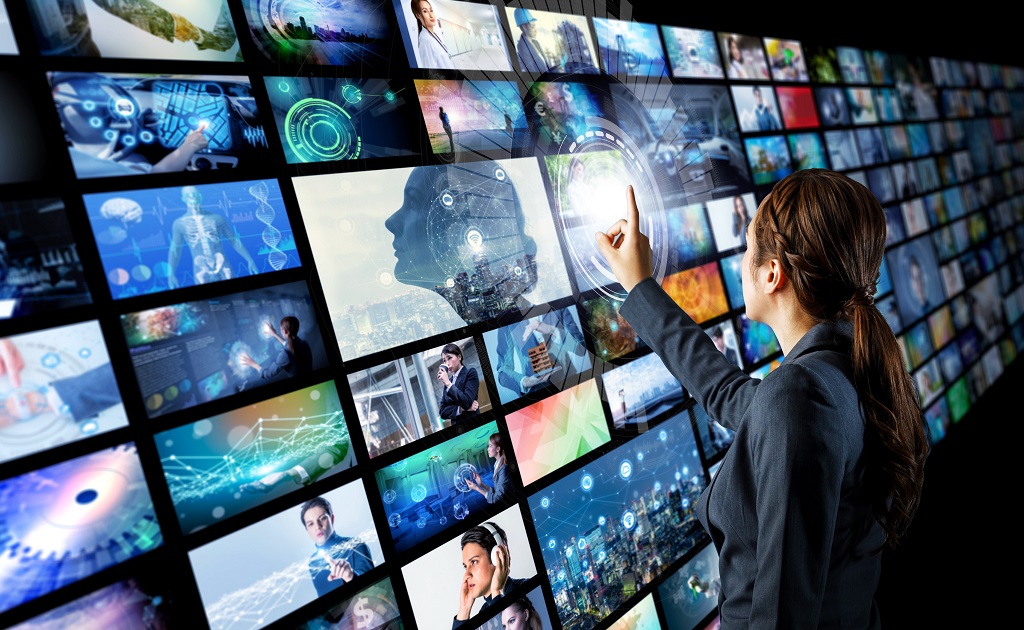It has now been almost half a year since the COVID-19 pandemic impacted every business globally. Organizations must rethink how they work, and the media industry is no exception. We must also understand that while most businesses are beginning to pick themselves up after this unforeseen crisis, the media industry needs to do much more.
The media industry has come a long way
The most momentous events that changed the media landscape throughout history started with a unique combination of innovative technology and its swift mass adoption after a crisis. Be it the European renaissance in the 1500s triggered by book publishing, newspapers during European wars in 1800s, feature films and radio connecting people during World War I or media bringing out the colors of nationalism in the post-world war era – the industry has always seen beyond times and found new ways to feed the social being with information and entertainment.
Televisions or linear media then became the key source of spreading information and entertainment. From the Apollo 11 landing on the moon to President Nixon’s resignation to the royal wedding of Prince Charles and Diana to fall of the Berlin wall or the 9/11 attacks - these events will always be etched in the memory of everyone who watched them live on TV. Each crisis brought a new medium and value associated with it to the audience without foregoing the earlier mediums. Newspapers, radio, TV, films – all of them still coexist in the media ecosystem.
With the advent of computers, the internet, and smartphones, media has become digital and personalized. Now, media has split into linear media and digital media. Linear media goes through the traditional broadcasters and distributors before reaching out to us in the form of TV channels and movies in theaters. In contrast, digital media is available on-demand via internet streaming services.
The COVID-impact on the industry
Like any other historical crisis, COVID-19 has also highlighted the prominence of media in public life. Despite the reduced advertisement revenue and lack of fresh content, linear media saw a sudden surge in viewership while digital media witnessed increased subscriptions. Netflix, for example, got 16 million new subscribers during the lockdown. The new routine also changed the previous consumption patterns of the audiences. During the lockdown, people explored new mediums & genres, and diverse types of content that altered their choices and consumption patterns. Like any crisis, the need to stay informed and entertained has increased the demand and consumption of content, and it is expected to remain high.
Ushering digital across the media value chain
Earlier, digital engineering was limited to the far end of the value chain - in transmission and consumption. The increased indoor presence after Coronavirus has now accentuated the need for digital across the entire media value chain.
In our earlier article, 4 emerging trends and challenges shaping the future of media industry, we mentioned that streaming services and enhanced omnichannel experience are the outcomes of digital engineering during transmission and consumption. However, with the COVID crisis, the need to create content remotely, bundle content from different sources and personalize the recommendations for the end-users, has emphasized the importance of digital engineering at the beginning of the value chain for content creation, aggregation, and distribution.
Creating content remotely
The COVID-19 lockdown spawned the need to create content from anywhere i.e., without the limitations of location. Content enhancement, editing, and approval - which required a complex workflow can now be done remotely with ease. High-end digital products can come handy to capture and edit content, enabling artists to create content from their homes. The need of the hour is to have innovative and intuitive digital products which can facilitate artists, designers, editors, etc. to collaborate remotely and deliver quality content. Rebellion Studios, for example, is currently in the process of producing film content with the help of its video game engine.
Generating new content from old
Halted productions resulted in the lack of fresh content and made broadcasters and production houses work on the strategy of reusing old content or media from other geographies. The record-breaking viewership in the reruns of TV shows on Ramayana and Mahabharata, in India showcase that good content can never be old. Each episode of Ramayana had an average viewership of 42.6 million people. However, such legacy content should be digitized to make it workable in the new formats and mediums. Digitizing legacy content is a complex process. Automated digital processing is a blessing for those looking to repurpose legacy content. Broadcasters also realized that movies in different languages could be dubbed and aired as it would be new content for the audience in a different location. An OTT player in the Middle East works on this model and caters to its viewers by translating Indian content into Arabic. Coordinated dubbing and editing of the content manually or in bits and pieces is difficult. AI & machine learning can make this process smoother, quicker, and error-free.
Integrating third-party content into your library
The proliferation of OTT players, need of personalized media, and varied consumption behavior (anytime, anywhere) mandated content creators to rethink and reshape their content development, enhancement, and distribution strategy. This created a new ecosystem that is driven by APIs and supplies content-as-a-service. Thus allowing media companies to store content in a form that is easy to discover, repurpose, transform, and distribute. All media companies need to reengineer how they store, search, and syndicate content to other partners.
The need for social recommendations
Viewers are now spoilt for choices, and they not only look for personalization but also for socialization through the media. In addition to their interests of the same language or genre, viewers are also interested in the viewing habits of their friends and social circle. The lack of social interaction for entertainment due to the closure of theaters is now fulfilled by watch parties. There is an increase in virtual watch parties where friends and families come together virtually and watch a movie or series. Netflix party is one such example. One of the radical behavioral changes in audiences during the lockdown is that they are now open to new choices and recommendations. So, a recommendation based only on their history or age group does not make sense anymore; the recommendation engine needs to be intelligent enough to also understand their social network and provide relevant suggestions. This requires a data-driven, intelligent, and socially-aware recommendation system, which can provide the options they are looking for.
The emergence of new formats for mass media
Assisted reality and virtual reality have been on the fringes for a while now, having been used in limited mediums like gaming or advertising or experience. The extended lockdown and restricted travel have created a space for this medium to explore newer dimensions. Using AR for virtual concerts or VR for travel videos provides immersive experiences in travel or virtual social movie binging with friends and family. VR and AR are leveraged to hold virtual concerts. Wave has featured more than 20 artists, transforming them into digital avatars in real-time. An event by Lindsey Stirling was attended by over 400,000 people across the world on different social media platforms.
Hyperlocal is the key
Hyperlocal is the new buzzword. People need to know about the number of positive cases in their vicinity, what their local administration is doing to ensure containment, what is now open and what is still closed, new guidelines for the locality, etc. The need to stay updated about the locality was never as critical as it is now. This brings a newer set of media services, which focuses on delivering hyperlocal news, into the picture. Newer digital products in the form of web dashboards, mobile apps are appearing, and they use GPS to deliver the pertinent information as per locality.
Bottom line
Each crisis brings forth new mediums or technologies in the media industry to cater to the need of the situation. COVID-19 has put the spotlight on the need for a digitally-reengineered media value chain, a socially-aware recommendation engine, and open & intuitive content as a service ecosystem. Many of these trends will become a part of the new normal in the post-COVID era. Let’s see if the media industry is ready to evolve through these storms and adapt to the new expectations.
Explore Nagarro’s offerings in Media and Publishing. For queries, please reach out to media.practice@nagarro.com.




